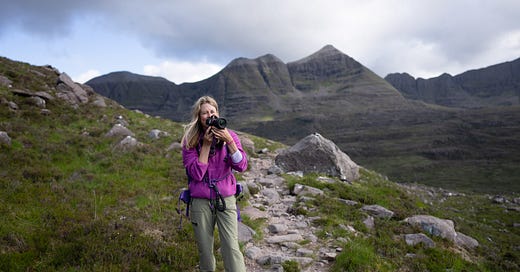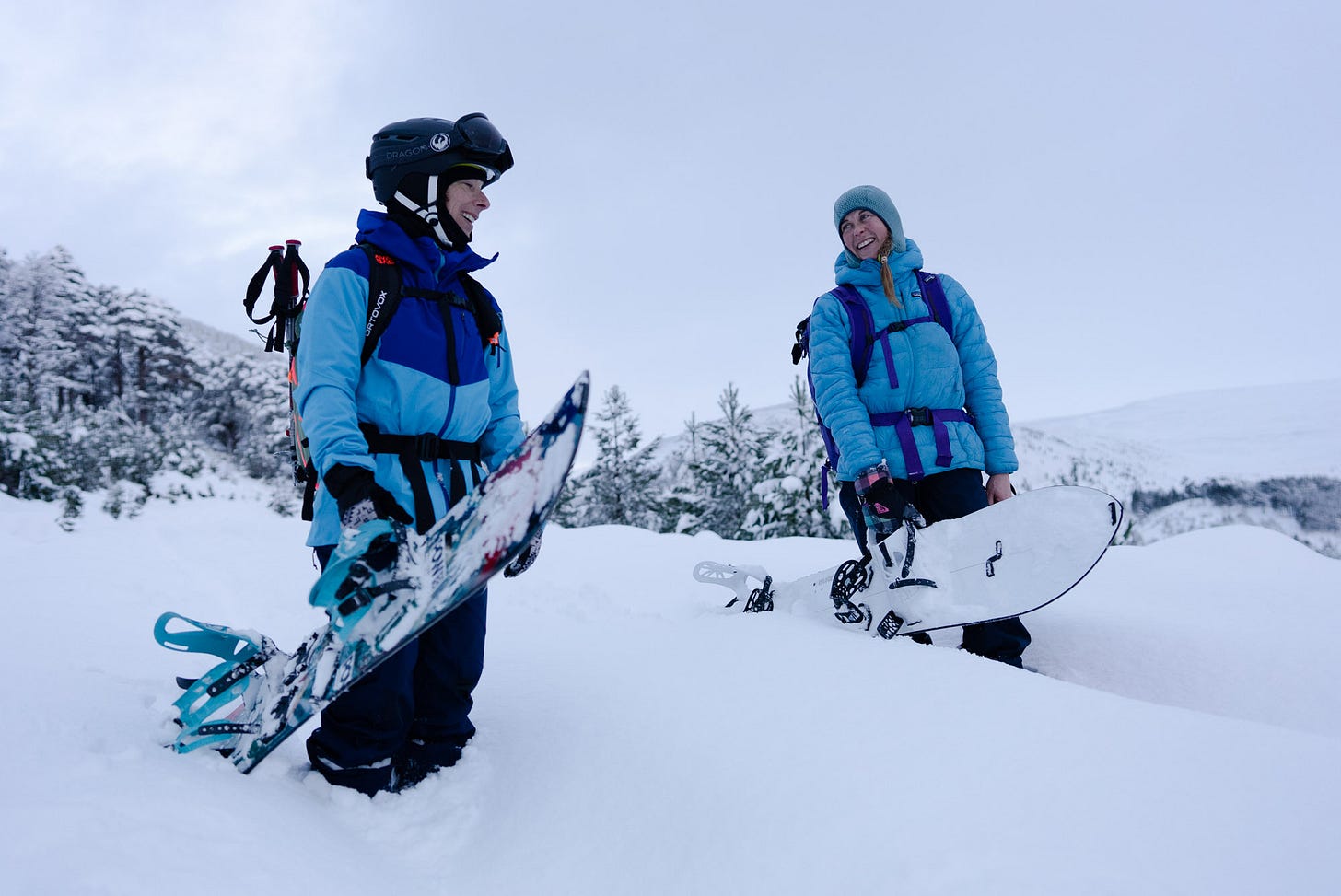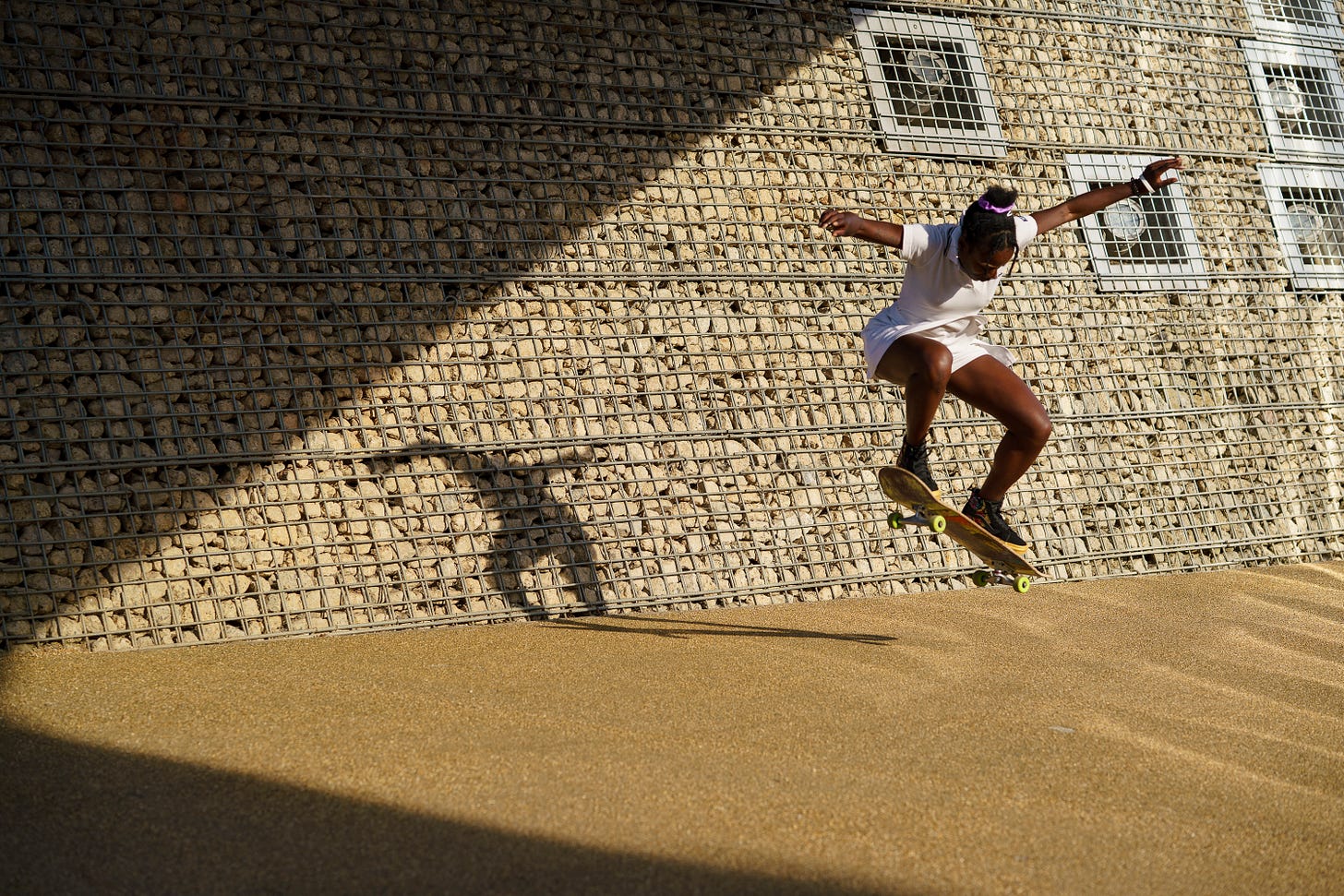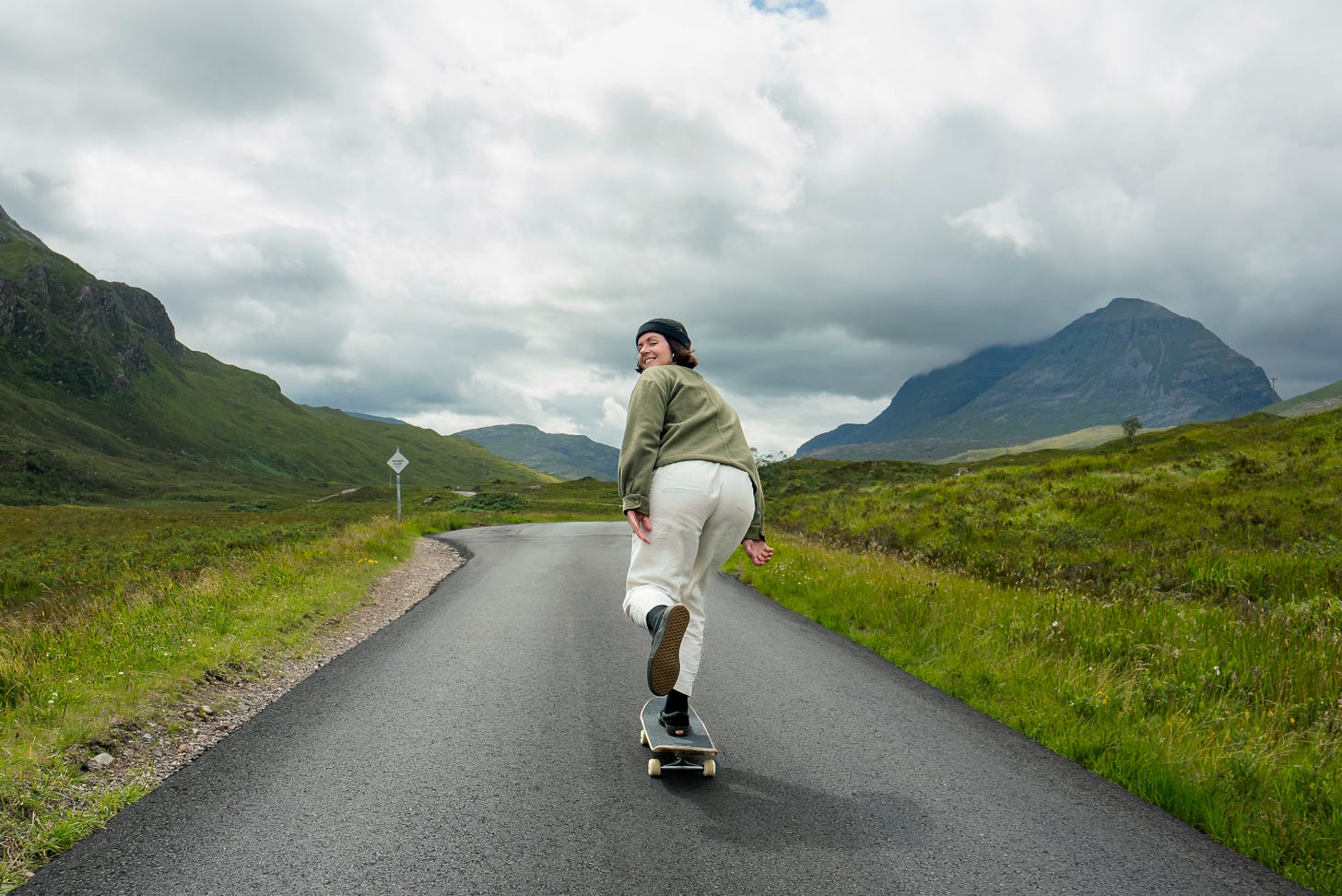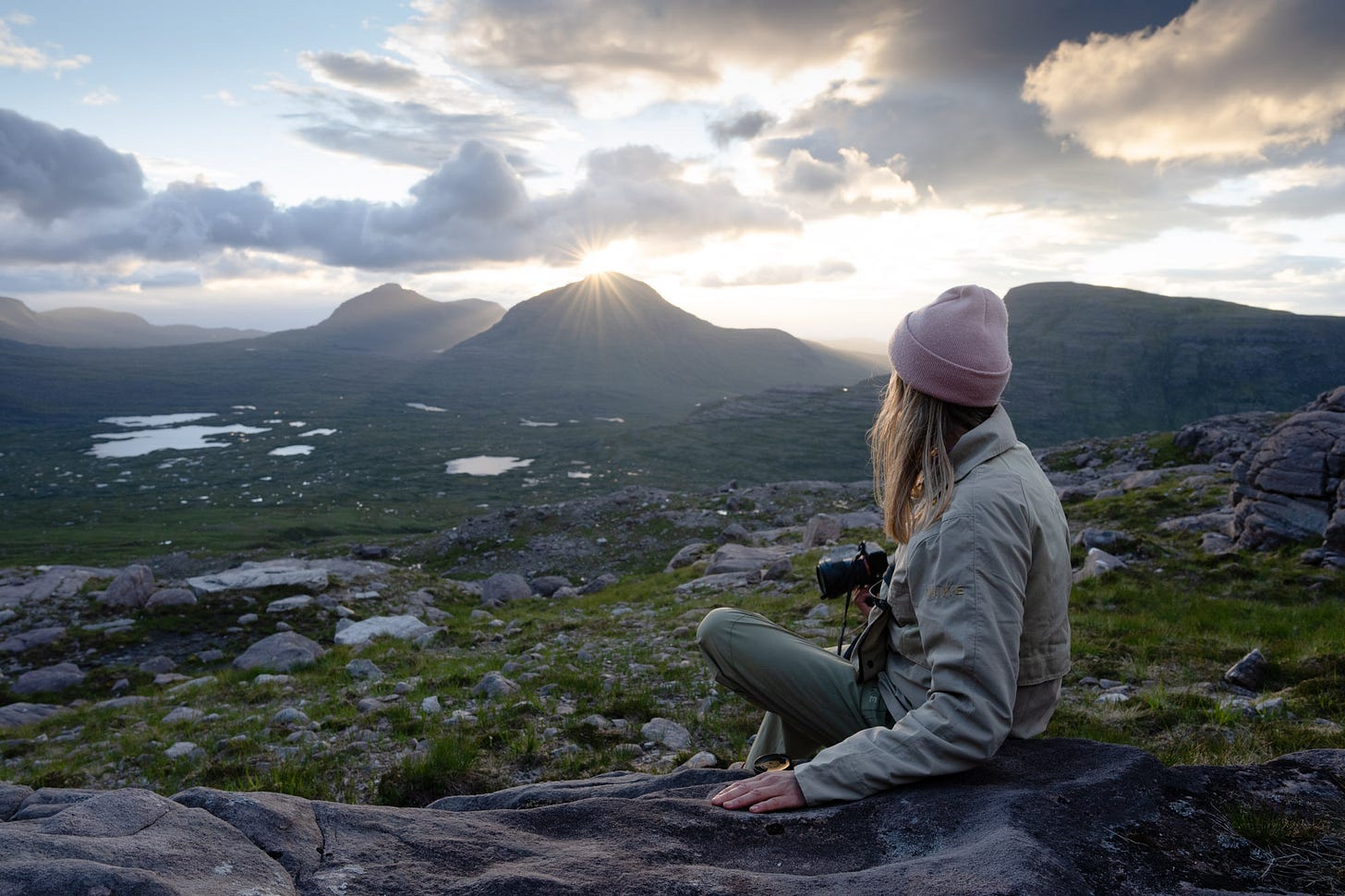Framed Outside: Meeting Hannah Bailey
Part 1: Who says you can’t be both Creative and Sporty ?
Thrilled to share the first portrait in this limited series, spotlighting women behind the lens in the outdoor and sports world. I had the honour of speaking with Hannah Bailey, a creative whose story and work have resonated with me for years.
Can you please give us a quick intro of yourself ?
My name is Hannah Bailey and for the past 15 or so years, I have been working in the outdoor and action sports sectors. I work as a communicator, photographer, and within films as well, as director and producer. All the projects that I focus on, are trying to highlight the good of action sports and outdoor sports and connecting us to ourselves, to others, and to the environment. I personally felt the benefits of that and I have seen the benefits of it to lots of people lives and I really want to push that message out to encourage more participation and connection.
Photo by Rupert Shanks
When and how did you find this path as a creative in this industry ?
I didn’t grow up connected to outdoors sports when I was younger: skateboarding, snowboarding, skiing. But I grew up in a part of Edinburg that was really connected to nature, right by the sea. I spent a lot of my childhood at the botanical gardens, and I absolutely loved going there. A lot of my holidays were in the north coast of Scotland, so they were big influences, that I hadn’t realised until recently actually.
Growing up I was always the sporty kid, sport was like top of my list. Part of that was having my older brother Neil, who would always drag me out to play football with him, climb trees, play tennis etc. But I came to feel like traditional sport wasn’t right for me when I was leaving school, it didn’t fulfil me in the same way. When you leave school, finding your way in the world, sometimes you get a bit lost and I did, I didn’t go to university like everyone else. I had been told at school that I wasn’t creative and that I was sporty.
Because I was a bit lost I ended up wanting to run away from Scotland, to the Alps to do winter sports and do a season. I didn’t even know what those things were really. I got a job in childcare for a season and I was introduced to snowboarding and was given a snowboard as part of my job. I had not been on snow, or skied before. As soon as I started snowboarding, everything started clicking, the connection to sports, to community. I was up in the mountains, in nature with my board and my buddies. Snowboarding gave me this feeling of wanting to be part of it, and a direction. I wanted to be on that path, working in it, supporting it and getting to know it.
Photo by Rupert Shanks
I committed a lot of time to find a way to work in the industry and started out as a receptionist for outdoor brands. I was given opportunities to see the different sides of the business, and this is how I found my place in communication.
Being in communication, I realised the gaps in marketing, in the industry. I was seeing them, going to skate events where the women side of the event was put on before they even televised it, they were filling up with any women skateboarders they could find and there was no legitimacy to it and I was just shocked by that. There was very few photographers on the side line back in 2012. Seeing those gaps, resulted in me picking up a camera to photograph them, me picking up an audio recorder to record their stories. Many of my roles come from addressing my belief that there is a gap in telling these stories. How can I helped this be focused on? Create the content, be part of that change, be the journalist, be the photographer.
As a photographer, it really started with skateboarding. The women skateboarders were asking me along to events and on trips, they were elevating me into that position because they knew I was really passionate, excited about it, and I wanted to support them. If I could try and steal pages from the magazines that were like talking about cellulite, and I could put in pictures of skaters or pictures of women doing sport, ultimately, that was like the aim of my photography.
Photo by Hannah Bailey
It was a different kind of pathway into a career, and it has dominated how I do my photography. It’s been much more about what messages I am trying to get out and being editorial.
Did the belief that you weren’t creative ever played in your mind during this journey ?
Deep down, I felt creative. Leaving school, I started to realise that I don’t need to fit the 5 categories of people that school put you in. There was this moment where I ruptured my ACL and had surgery - during that time I was off my board and found some of my granddad's old analog cameras, he was big into photography. He had his own dark room at home and although I didn't get spend a lot of time with him, I feel like I actually have a lot of his passion for photography. So I started, experimenting with film cameras. For the first few years, I was stubborn and didn’t use a digital camera because it felt like I would be putting pressure on myself to make it an official part of what I did and it would change how I felt about it and I would lose my creativity.
In 2017, I was nominated for an award by the Women's Sports Trust for filmmaker or a photographer of the year. I hadn't actually shot on digital before, so I went along to the awards and like total surprise, I won the award. I was on stage with Getty Images and someone from Canon. And afterwards a person from Canon said to me, oh, do you shoot Canon? I should have obviously said yes, but I was like, no, I don't shoot any digital. And they were just so surprised that somebody had won like Photographer of the year, but never actually shot a digital camera. But that moment I realised, okay. You know what? It would be probably a good idea to embrace a bit of digital. It's like everything. All the AI stuff, I'm like, no, no, no. And then I go, well if the world's going that way, and it's evolving that way, you gotta work at it to use it. Even if you're using it, you can still use it for good.
Photo by Hannah Bailey
Did you ever find brands marketing tailored towards "pretty“ rather than performance?
Over a decade ago, It was quite a shock to see how brands were trying to market to women versus men within action sports. And there was always cliches like “women want pinched in waist jackets and like pretty fur-lined hoods” And, I would always be sitting there going, no, we don't actually. When I'm out on the hill, I don't really want a fur-lined hood that's gonna get really wet and weigh me down in the back country. What's changed now is that there's more women higher up in brands, so they have more of a say. Why are we even having binary gender within it anyway? Put us all in a room. We're all different body shapes. We all have different activities and ways of doing activities, I'm a big believer in the unisex side of it all.
What's changed too is the realisation of the power of the female consumer. We want to buy things that accurately represent how we feel. And I think that's always been the case. Previously in brands like Roxy and Nikita, it really did stand up for women and were doing that with their marketing and they were supporting and paying ambassadors. Now there's very much a trend in supporting women in marketing action sports that has helped bring through a lot more athletes and genuine and accurate kind of marketing. But there's still a way to go with it, like who's behind the scenes, photographing and capturing that.
Photo by Rupert Shanks

